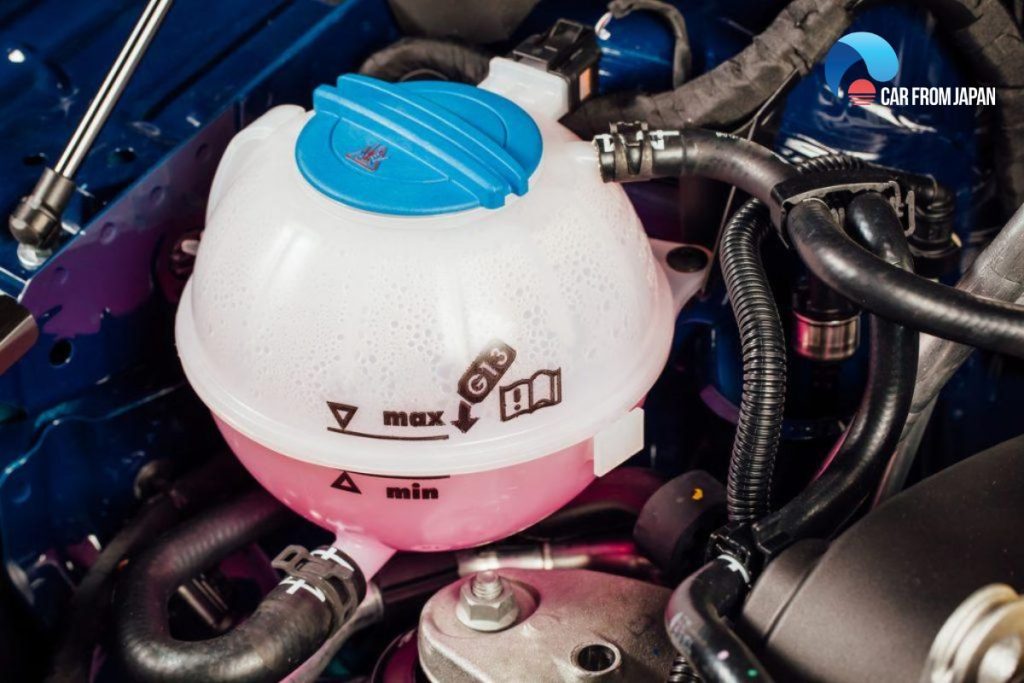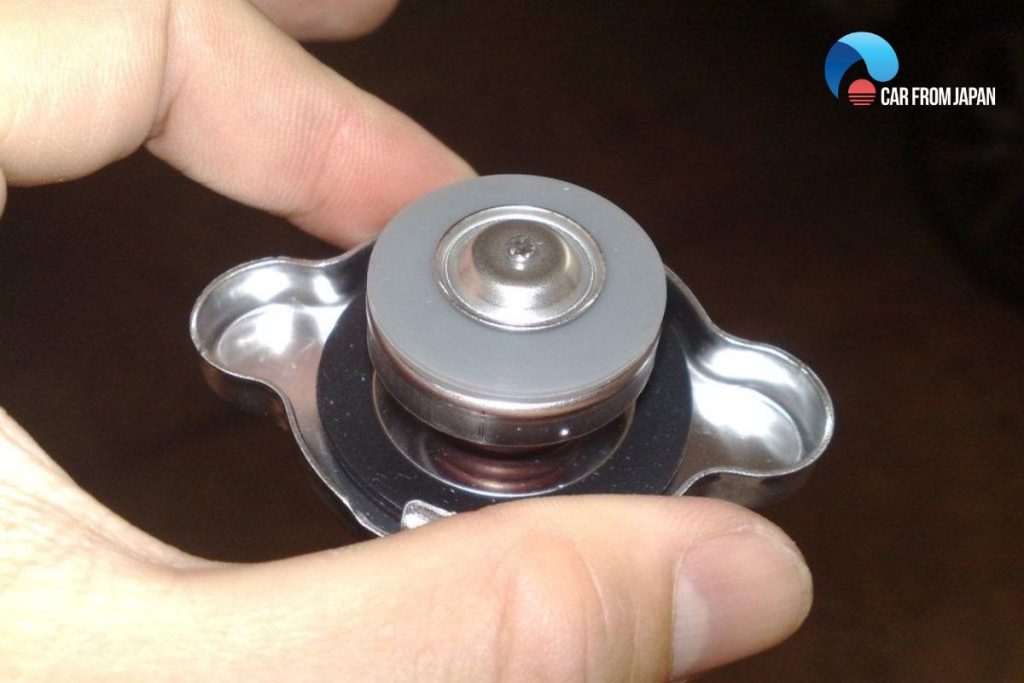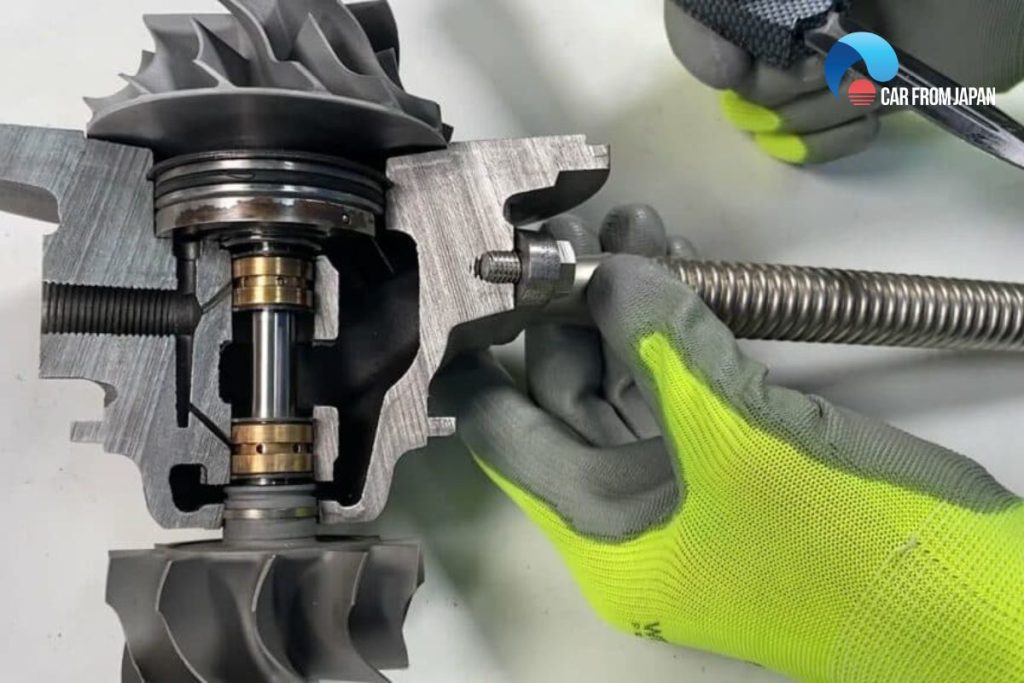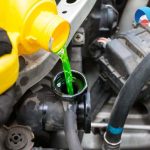Monitoring car coolant level and condition is a major part of the regular maintenance. Generally, there should be a leak somewhat if the vehicle is losing a high amount of antifreeze. However, a car could be losing coolant but no leak!
So what should you do when coolant disappearing from reservoir without leaving any trace? Let’s follow with Car From Japan right now.
Contents
What Are The Symptoms of Loosing Coolant on Cars?
Coolant, also known as radiator fluid and antifreeze, is vital to the hydration of the cooling system and the vehicle. As a result, mechanical failures in the cooling system are one of the main reasons for vehicle breakdowns and pose dangers to the driver.
Here are some early symptoms of your car losing coolant you should keep a close eye for.
Low coolant reservoir
If your coolant reservoir is empty or the coolant level continues to drop after being topped off, you may safely conclude that your car is losing coolant. Check your coolant levels on a regular basis and fill up as needed until you find and correct the cause of the leak.
White exhaust smoke
White smoke from exhaust is another sign of coolant loss. White smoke is produced when coolant escapes into the combustion chamber.
Keep an eye out for excessive white smoke coming from your exhaust, particularly while starting your car or accelerating.
Overheating
If your engine is running hotter than usual, or if you observe a sudden decline in fuel economy, this might be an indication of coolant leakage. Carefully check the temperature gauge and pull over immediately if it enters the red zone.
Low heaters performance
A heater failure, especially one that blows cold air, can often be caused by a coolant level issue. When the coolant level is low, there is not enough fluid to transfer heat effectively to the heater core.
This will result in insufficient heat and cause the heater to blow cold air even though the engine is warm (having been running for a while).
In general, keep in mind that, while the symptoms above may indicate coolant leakage, they might also signal other vehicle problems.
However, because having enough coolant in your engine is critical for its performance, make it a point to determine what is causing these symptoms. Otherwise, you risk causing costly engine damage.
Losing Coolant But No Leak: Where Is My Coolant Going?
It may sound ghostly if you think of coolant loss, no visible leak. But, things are not as complicated as they appear to be.
A poorly maintained antifreeze system, defective components, or a rapid change in the driving style may contribute to this coolant disappearing.
Below can be some culprits when the antifreeze level is sinking without any visible leak.
Overflown coolant system
Overfilling the system can be the reason for the mysterious disappearance. You have to keep the liquid at the required level.
There’s a COLD/MIN label on the tank indicating the ideal antifreeze level when the engine is cold. The coolant in the radiator should be just below the filler neck.

An inside puncture
When there are signs of losing antifreeze but no leak, several parts could be the guilty party. It could be a blown head gasket, a fractured cylinder head, damaged cylinder bores, a hydraulic lock, or a manifold leak.
If the antifreeze vanishes without any apparent reason, check these components for cracks, damage, or defects. Any of these issues can destroy the engine if it is going for too long.
However, you may breathe easier if the mechanic does not find any trace of exhaust gasses in the coolant. It means that the liquid has not reached the engine yet.
A worn-out radiator cap
The radiator cap can deteriorate over time, letting antifreeze slip through when you are driving. A clogged radiator system could be a problem too as it blocks the flow of the liquid. Check the radiator when the coolant disappears without any leak.

Overheated engine
Engine overheating and coolant are closely related to each other. Loss of the liquid can lead to the overheated condition but overheating can also contribute to the coolant loss.
Just fill up the tank to the maximum limit and keep an eye on the engine condition and the rate of coolant usage.
Using a temperature gauge will tell you whether the engine is running hotter than usual or not. If this is the case, take the car to a mechanic to find out the causes of overheating. Solving the issue will bring back the normal cycle of coolant consumption.
Failed turbo seals
In turbocharged vehicles, if the turbo seals between the compressor and engine wear, oil may seep into the turbo and combustion chambers. Turbo seal failures, like burst head gaskets, are frequently internal, resulting in coolant loss but no visible leak.
Some turbos are additionally cooled by a mixture of engine oil and water, which, after being burned up in the engine, exits the exhaust as black smoke.
Reduced engine power and whining noises from the turbocharger are also indicators of a turbo seal leak. A turbo “boost” indication or, in certain situations, a check engine light may also illuminate on the dashboard.

Coolant leak hard to notice then evaporating
Another reason your car coolant disappears with no leak or overheating signs is because the leak is too tiny to detect. Pinhole leaks may only result in a few drops of coolant loss every month, scarcely enough to form a puddle.
Depending on the position of the leak, coolant will escape as liquid or steam. Because coolant is a 50/50 mixture of antifreeze and water, it will evaporate if it drips on hot engine components.
See More: Getting Smells of Antifreeze? What to Do?
Some other things that can cause the losing coolant with no leaks are driving uphill, hauling heavy loads, a faulty exhaust gas recirculation (EGR) system, and a worn-out water pump.
There are not many signs to check for, but if you discover the culprit, modest amounts of white residue may be left behind.
FAQs About Car Losing Coolant
How to change the car coolant?

You can follow the following steps to change the car coolant.
– Step 1: Remove the tank cap. Check car coolant level
– Step 2: Add a 50/50 engine coolant and distilled water into the coolant tank.
– Step 3: Fill until the water level reaches the standard level (clean water can be used instead if it’s an emergency).
– Step 4: Check the solution level several times.
In case it is necessary to open the coolant tank, follow these steps to ensure safety:
– Place a wet towel over the lid of the water tank.
– Hold the towel and grip the radiator cap tightly. You should not stand directly with the water cap.
– Turn the cap and add the lid down
– In case the water overflows, control it following a principle of Open – Close – Open – Close, until the water pressure in the system is reduced.
Can cold water be mixed into the coolant solution?
Yes, but it’s not recommended. Using cold water mixed with cooling water for a long time, it will affect engine performance.
In an emergency there is no distilled water, you can use clean water to make a replacement for car coolant. But this is only a temporary solution.
How often does the coolant need to be changed?
Usually, after traveling from 40,000 to 50,000 km (about 2-3 years). Then we need to clean the cooler and change the coolant solution.
A large frequency of car usage, severe weather conditions, or heavy loads also cause loss of coolant and a faster coolant changing cycle.
Therefore, the best care and maintenance is: regularly check the cooling water and cooling tank.
Is it normal for the coolant level to drop over time?
If the engine is in good working order and there are no leaks or damage, you can expect a coolant loss of 0.25% every four to six months. This suggests that losing two to three ounces every year is perfectly normal.
What notice should I give after changing car coolant?
After you have finished checking the amount of cooling water, you can add more coolant water if the amount of water is exhausted. Then look closely for any flow or leaks at the joints.
– If everything is fine, start the engine in place and check the temperature meter.
– If the temperature needle is at a safe level, it is possible to temporarily fix it and continue the journey.
– In case the heat needle still indicates danger, wait for the machine to cool down for about 15-20 minutes, then restart the car.
– In case after following the above instructions, the coolant tank is still in a dangerous position, call for help.
Check out this video from Scotty Kimmer to learn more about how to keep your coolant tank and cooling system always in good shape!
Conclusion
So next time if your car is losing coolant but no leak, take cautious to find suitable ways to deal with the problems in no time!
Hope you find this article insightful and see you again for more car maintenance tips!



